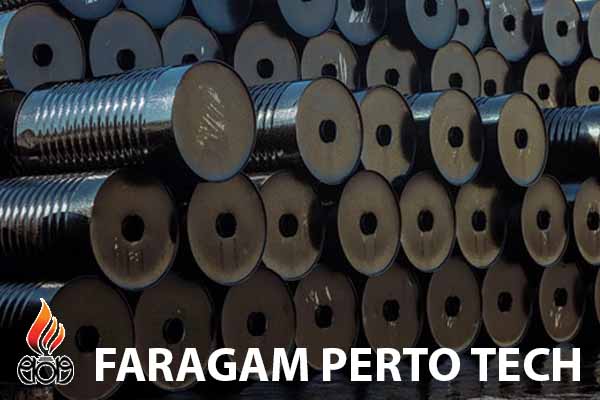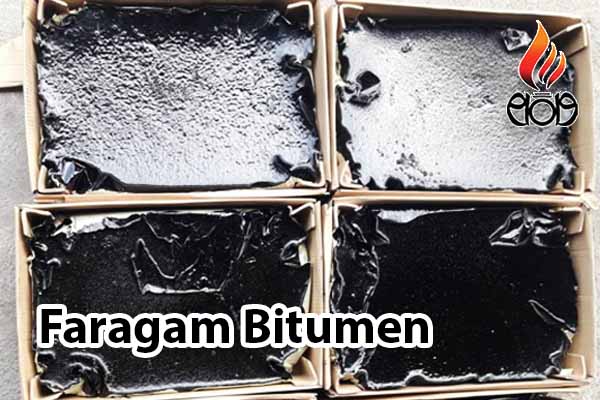


Bitumen emulsion K3
Bitumen emulsion K3 is a mixture of water & bitumen, Addition of emulsifier with water facilitates breaking of bitumen into minute particles, K3 is a cationic (slow setting) road emulsion that contains 56% bitumen.
Asphalt emulsion K3 is in chocolate brown in color and is a free flowing liquid at ambient temperature and it is cold applied, liquid bitumen emulsions.
Advantages of bitumen k3
At the following you can find some advantages of this product:
Environment friendly
No heating required
Cost efficient
Easy and uniform spray
Low temperature curing, fast setting time
High adhesive properties
Prevents slippage of structural layers
Applications of bitumen k3
Bitumen Emulsion K3 is for road pavement bases and surfaces projects as:
Plant mix (cold) with both dense-graded aggregate and sand
Mixed-in-place with dense-graded aggregate
Slurry seal
Also, k3 emulsified bitumen use for some bituminous applications like:
Fog Seal
Prime coat-penetrable surface
Tack coat
Dust Binder
Mulch Treatment
Crack filler
Availability
Bitumen Emulsion K3 is available in:
Bulk
IBC Tank, Flexi Tank
Reconditioned steel drums 220 lit., Net Weight: 200 ± 3 Kg
New steel drums 220 lit., Net Weight: 200 ± 3 Kg
Delivery
The Delivery can be done in all terms like: FOB, CFR and CIF
Emulsion bitumen
Emulsion bitumen is produced in two types, anionic and cationic. From a technical point of view, cationic emulsion bitumen became popular since 1951 and due to their characteristics, they quickly replaced anionic emulsion bitumen. Water and bitumen do not mix with each other, but the technology of making emulsion bitumen has made it possible to disperse a certain percentage of bitumen in the continuous phase of water. A compound called an emulsifier keeps bitumen particles suspended and stable in a charged form (having an electrical charge) in the continuous phase of water.
In this mixture, the bitumen (which should only be industrial bitumen 50-40, 70-60 or 85-100) does not dissolve in water, but floats in water in the form of very small globules. In some cases, stabilizer may be used along with emulsifier. Bitumen emulsions are mainly liquid-in-liquid emulsions in which the bitumen is dispersed in the water phase. In this type of bitumen emulsions, the amount of bitumen depends on its application, which usually ranges from a minimum of 40% to a maximum of 69%. Bituminous emulsions are divided into three categories: fast-breaking (RS), slow-breaking (MS) and slow-breaking (SS), and in terms of bar electricity, bitumen suspended particles are divided into three categories: cationic (C), anionic (A) and amphoteric or neutral according to are classified Since emulsifiers are chemical substances with an active surface, they determine the electric charge of the emulsion. In the preparation of bitumen emulsion, a small amount of this chemical substance is added to facilitate the formation of bitumen globules and stable suspension.
Instantaneous breaker, delay breaker, slow breaker, electric load breaker / time breaker
CQS CSS CMS CRS positive charge (cationic)
AQS ASS AMS ARS negative charge (anionic)
Characteristics of bitumen emulsion:
The possibility of transporting to remote places in bulk (with bitumen tanker, truck and trailer) or barrel (preferably oil barrel).
The ability to use asphalt with small thicknesses.
High spread speed of surface or thin asphalt and also, increase of asphalt operation due to drying less than 2 hours.
Suitable for any type of asphalt, base and coating (street-highway-airport runway).
No need for heating during storage, transportation and spraying.
Can be used at ambient temperature (from a minimum temperature of 5 degrees and a maximum of 80 degrees Celsius) and on wet pavements.
Good permeability due to high fluidity.
Non-complexity of required machinery and ease of use.
Fully compatible with the environment and non-polluting both in the manufacturing and production process and in the process of transportation, spraying and breaking.
Rapid breakdown of bitumen emulsion against stone materials and air (only 1 to 2 hours).
It was non-toxic and free of any kind.
Non-flammability during storage, transportation and execution.
Color change from brown to black after the breaking process of bitumen emulsion and preparing for traffic or implementation of the next layer of asphalt.
Indirect heating if the ambient temperature drops to less than 5 degrees Celsius, with a system such as piping hot oil to increase the temperature to 5 to 15 degrees in order to prevent freezing and biphasing.
Durability in the tank for at least 3 months at the temperature stated in paragraph 6. the moon remains homogeneous and mixed).
Pumping and emptying from the tanker trailer to the bottom of the storage tank and not dropping emulsion bitumen from a height of more than 30 cm (to store in the tank, emulsion bitumen must be pumped to the bottom of the source or with a hose that is stored to the end of the tank If it is pumped from the tanker trailer to the storage tank, it foams and becomes two-phase).
Broken and washed stone materials and not carrying soil (or 0-3 materials in aggregates) to the bitumen emulsion that sticks to the first object in contact due to its high adhesion, instead of sticking to the soil on the materials, to the materials themselves the target stone sticks and the bullet does not roll or roll (it is enough to spray the sitting stone materials with a water sprinkler so that the soil or materials of 0 to 3 mm sink into the top of the stone materials and somehow free the stone materials from the soil to obtain the highest level of adhesion between the emulsion bitumen and the desired stone materials).
Cationic emulsion bitumen standards:
The standards of cationic emulsion are ISIRI 12505 of Iran, ASTM D2397 of America, BS EN13808 of Europe and IS8887 of India.



